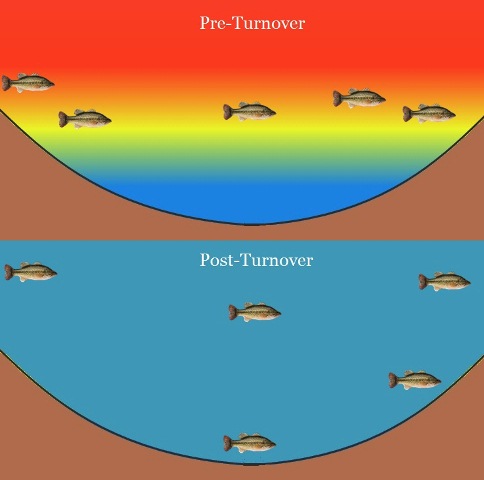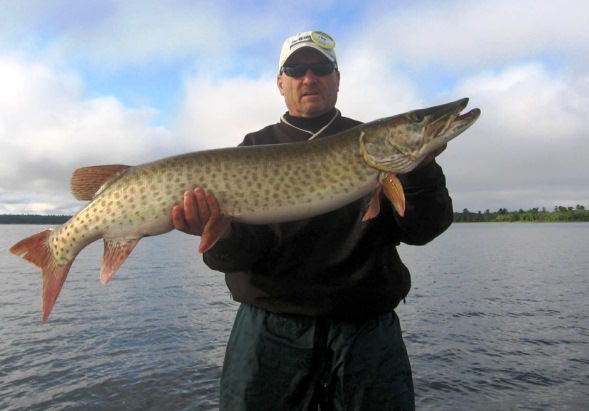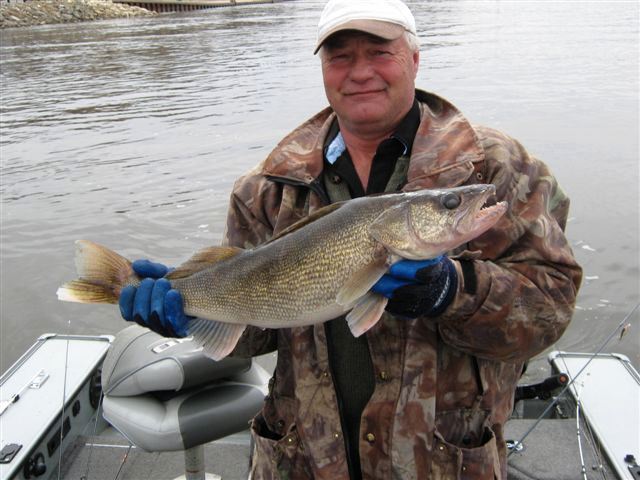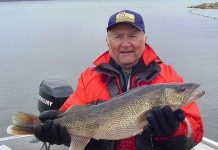We are now past one of the most beautiful times of the year in much of the northern states and particularly in states in the Upper Midwest like Wisconsin and Minnesota. The magnificent colors of the fall are gone for most of this area and the Upper Midwestern states. A vast majority of the trees have lost their colors and fallen to the ground, the temperatures have cooled down considerably, and the shortening of daylight all have signaled that winter is on the not so far away horizon. Along with these things, another fall phenomena is happening or will soon on most waters. What I’m referring to is the annual fall turnover on most of Wisconsin’s lakes and waters.
I’m going to be writing about the phenomena called turnover which happens twice a year on our lakes once in the spring and again in the fall. I’m going to be concentrating on the fall turnover which is now taking place. Understanding what is happening in the lake will improve your fall fishing and help you find the active and hungry fish. The late guide, Jim Hudson, explained to me that the most important thing to remember is that the key to understanding what is happening to lakes when the water gets below 55 degrees is oxygen.
To put things in simpler terms, this is the time when the lake’s waters begin to mix. During the summer months, you’ll have warmer water at the lake’s surface and as you go deeper the temperature of the water cools. The lake’s water then flip flops or mixes allowing oxygen to be distributed throughout the entire lake. You’ll find a constant water temperature from the top layer to the bottom unlike summer when water temperature is stratified or in layers which get cooler as you go deeper. This mixing occurs when the surface temperature of lakes reaches 50 to 55 degrees F. When the lake’s water reaches this temperature, the surface water becomes denser than the other water in the lake’s water column. The dense and oxygen rich surface water will sink to the bottom which in turn pushes the oxygen depleted water from the bottom to the top of the lake. This circulation of water which is aided by the wind allows the water which was on the bottom to be re-oxygenated.

What does this water action do to the fisherman? Since the entire lake now has oxygen throughout the entire water column, fish are scattered and can be found anywhere in the lake. This is good news for anglers to know because before the fall turnover fish were still in their summer locations. Fish were still in their summer areas because of the high oxygen levels among other reasons like the location of bait or forage fish. So now with oxygen at all depths in the water column, fish are no longer limited where they can go and look for food. The fish are now scattered and can be anywhere in the lake which can makes fishing more difficult and makes fish of all species harder to find after the fall turnover.
Fall turnover can come quickly to a lake and one day you can be catching your favorite fish and the next day these same fish can be gone from your favorite spot. It’s difficult for the angler to find fish after turnover, so they must try to cover as much water as possible. So to catch fish during this unique time period, you must be willing to fish both shallow and deep, move quickly from one location to another, and use lures and crankbaits that can cover water quickly. Tournament anglers would call this method a run and gun technique. This is a great time to use “search” lures like crankbaits, spinner baits, and other baits that allow you to cover water quickly as you look for the scattered fish. Trolling is another technique that is well worth trying because it allows you to cover more water until you find the fish. If you catch a fish or two it is worth the time to fish the area thoroughly in case you’ve located more fish. This slow down period after turnover lasts only for a few days or a week at the most before fish get back to your basic fall patterns.
A few other things to try and remember are that in larger lakes the whole lake may not turnover at the same time. Also, all lakes are unique and lakes turnover at different times with smaller lakes turning first and larger lakes turning over last. Small and shallow lakes may not even turnover at all because the wind constantly keeps the water circulating and rivers with their flowing water also do not experience this fall action. If you understand the fall turnover, you can stay on lakes and fish the waters that have already turned over or have yet to turn. If you’re fishing larger lakes, you can sometimes find this phenomena taking place at different locations on the same lake and by going from one location to another you can find fish without leaving that lake.
Locally, the Madison Chain of Lakes is in the turnover process as I write with Lake Waubesa, Lake Monona, and Lake Kegonsa turning over first. Lake Mendota with its large size and deep water is the last lake in the Chain to turnover. Lake Wisconsin and the Wisconsin River do not have a fall turnover because they have current and a water flow that keeps the water circulating year-round. Another little tip to remember is that lakes that are turning over are cloudy with minimal visibility and an “off” scent or smell from decaying vegetation. Try to use the information that I’ve given you and you should be in for some of the year’s best fishing!




Thank you a lot. It is very good at know these informations.